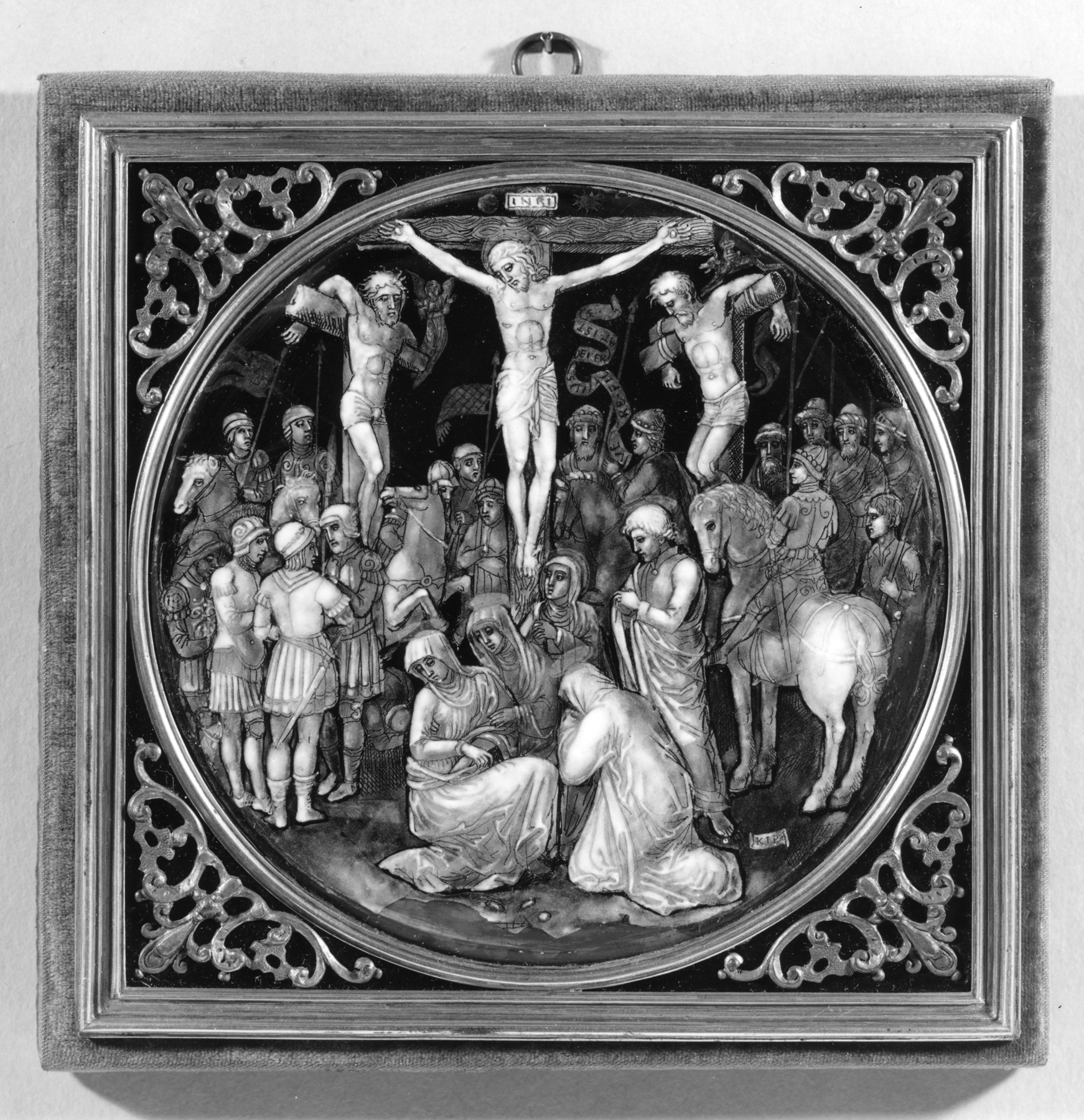The Crucifixion
(Renaissance Europe )
The composition includes many figures, according to a tradition established by the 14th-century formulation of the Crucifixion in Sienese painting. Mounted officials and foot-soldiers mingle in a dense throng, above which rise the three crosses. The drawing of Christ is of great beauty and reminds one of a Florentine Corpus of the Quattrocento. In the foreground at the foot of the cross is the group of holy women huddled around the swooning Virgin, watched by St. John. This is also remarkably executed. The diagonal position of the crucified thieves fits well into the roundel. An angel in gold hovers near the Good Thief, on Christ's right, and a demon is drawn in grisaille above the Bad Thief. Near the Centurion, a gilt scroll soars upward inscribed: VERE FILIVS DEI ERAT ISTE. Below the horse on the right an open scroll bears the monogram KIP.
Inscription
Provenance
Provenance (from the French provenir, 'to come from/forth') is the chronology of the ownership, custody, or location of a historical object. Learn more about provenance at the Walters.
Cardinal Giacomo Antonelli, Minister to Pope Pius IX (1806-1876), Rome [date and mode of acquisition unknown]; Family of Cardinal Giacomo Antonelli, 1878, by bequest; George Robinson Harding, London, [date of acquisition unknown] by purchase; Henry Walters, Baltimore, June 17, 1904, by purchase; Walters Art Museum, 1931, by bequest.
Geographies
France, Limoges (Place of Origin)
Measurements
Diam: 4 3/8 in. (11.1 cm)
Credit Line
Acquired by Henry Walters, 1904
Location in Museum
Not on view
Accession Number
In libraries, galleries, museums, and archives, an accession number is a unique identifier assigned to each object in the collection.
In libraries, galleries, museums, and archives, an accession number is a unique identifier assigned to each object in the collection.
44.137


